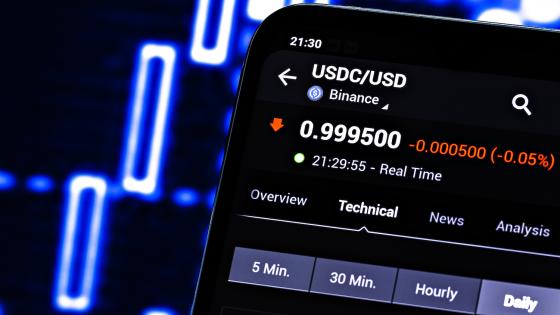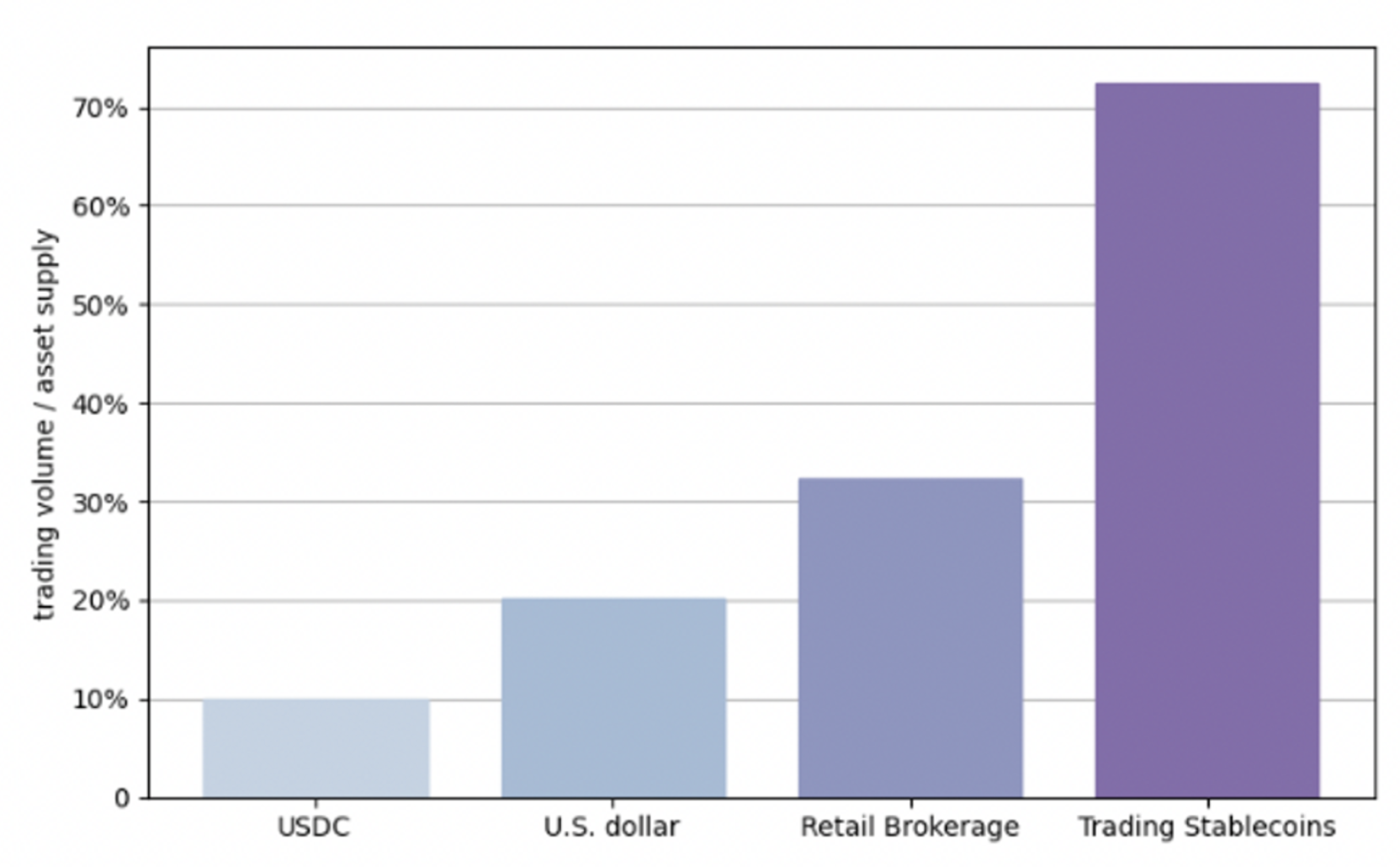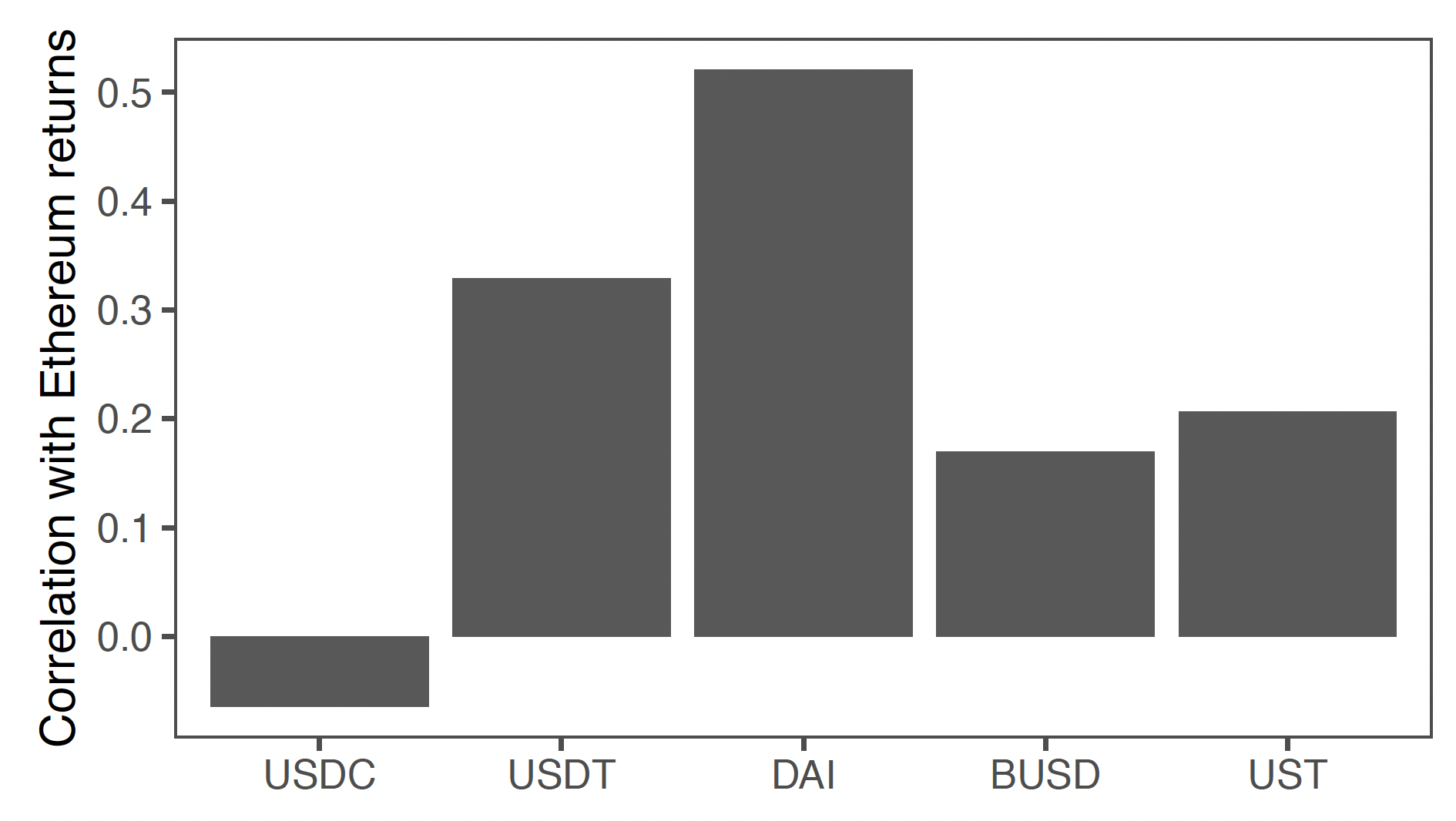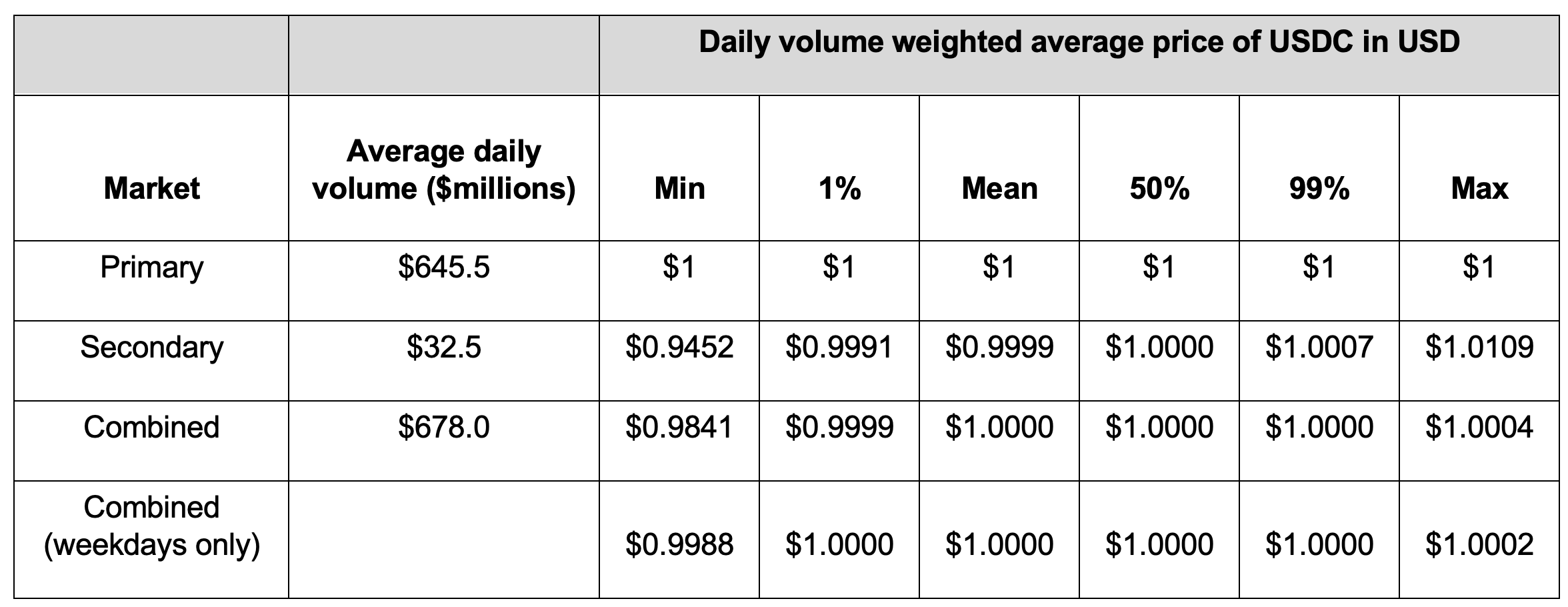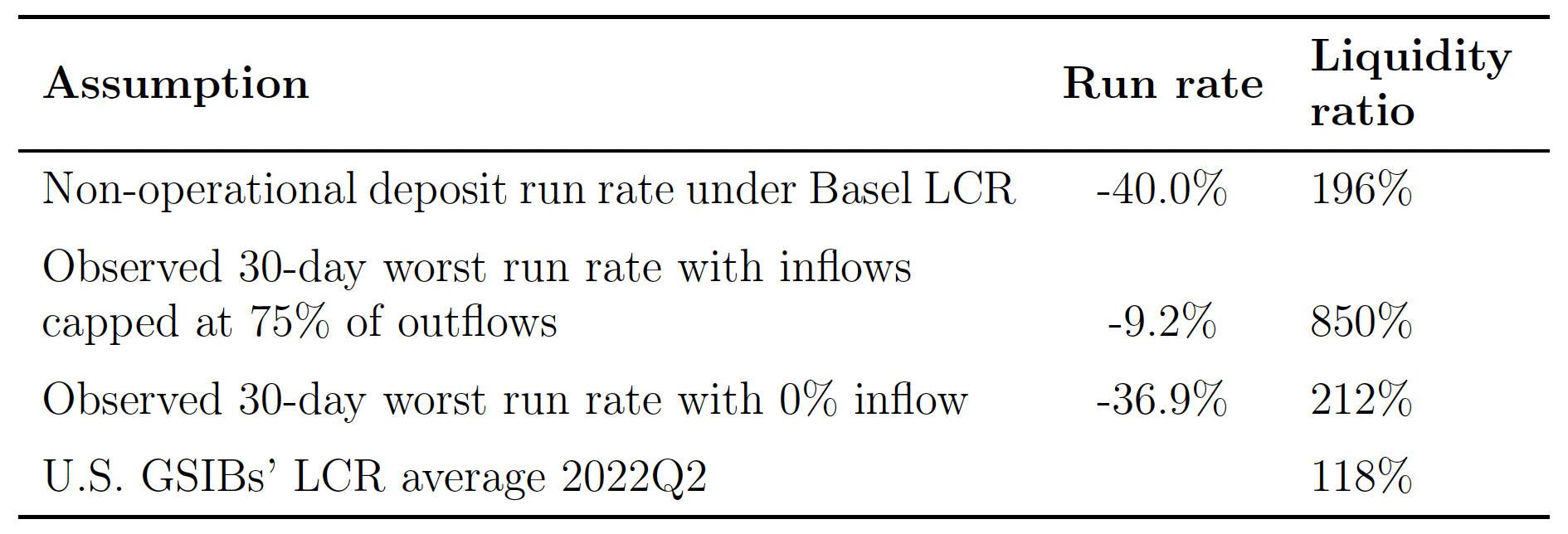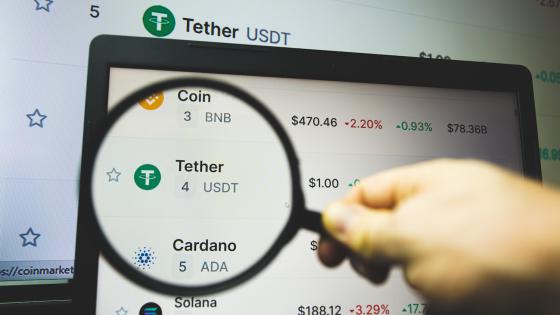Recently, stablecoins have garnered considerable attention from financial regulators worldwide. The two questions at the core of the discussion are what purpose do stablecoins serve and what impact do they have on the financial system. Those who support stablecoins see them as innovation that improves payment infrastructure and increases access to financial services. On the other end of the spectrum, critics argue that stablecoins are mainly used to fuel speculative trading in the cryptocurrency market.
The stability of stablecoins is also a key point of contention. Leading reports from the official sector simultaneously highlight a concern for the lack of stability and the fear that this new form of digital money can become too safe, leading to possible outflows from depository institutions during times of stress.
Below I present analyses drawing on recent papers that address the concerns of the stability of stablecoins and disruption to the existing banking system. First, payment stablecoins are shown to have significantly lower exposure to speculative trading activities than their fiat currency counterparts. This is in stark contrast to trading stablecoins, which have been heavily used in such speculative trading. Additional research suggests that payment stablecoins offer an effective way to exchange foreign currencies and settle cross-border payments (Adams et al. 2023).
Second, ‘tokenised cash’ stablecoins – payment stablecoins that are backed by short-term high-quality liquid assets – have liquidity ratios that far surpass those required in typical banking requirements, while alternative stablecoin arrangements face greater run risks (Liao 2022). Furthermore, broader adoption of such payment stablecoins can crowd in deposits to the banking system by replacing physical cash in circulation with tokenised cash (Caramichael and Liao 2022).
Payment versus trading stablecoins
Stablecoins’ association with trading activities can vary greatly. One way to assess the level of speculation surrounding a currency, whether it be digital or fiat, is to compare the total trading volume facilitated by the instrument to the amount of currency in circulation. This approach can also be used to evaluate the overall cash balances in retail brokerage accounts, as well as the total amount of M2 US dollars in circulation.
This method reveals that stablecoins differ markedly in their exposure to speculative activities. Figure 1 shows that the payment stablecoin USDC has minimal speculative exposure compared to its fiat currency equivalent, while trading stablecoins like Tether and BUSD have over seven times the speculative exposure relative to payment stablecoins.
Figure 1 The tokenised US dollar is used less frequently in trading than the US dollar
Notes: This figure shows the ratio of average daily trading volume to circulation for each category. For USDC, the trading volume is the crypto trading volume in USDC-associated pairs. The speculative ratio for trading stablecoins is the market-cap weighted average for Tether (USDT) and Binance USD (BUSD), based on an analogous methodology. The data on trading volumes are from Kaiko. For the US dollar, the ratio is that of daily trading volume in major asset classes – FX, equities, and fixed income – relative to M2 circulation. Retail brokerage speculative ratio is calculated based on the reported number of customer transactions of a leading retail brokerage firm, multiplied by the average trade size, divided by the customer cash balances held in the brokerage.
The varying levels of stablecoins exposure to cryptocurrency trading can be further observed through their relationship with asset returns. Figure 2 shows that the correlation between the change in stablecoin circulation and crypto asset returns varies according to the type of stablecoin. For instance, payment stablecoins exhibit little correlation with Ethereum returns, whereas the circulation of trading stablecoins is significantly and positively correlated with Ethereum returns. The crypto-collateralised stablecoin Dai shows the highest correlation with crypto asset returns. This is because a decrease in the asset collateral’s value can prompt the forced redemption of the stablecoin (Lehar and Parlour 2022).
Figure 2 Payment stablecoin circulation has low correlation with crypto asset returns
Note: This figure shows the correlation between 10-day log returns of Ether and 10-day log changes in the market caps of the five major stablecoins. For additional details, see Liao (2022).
Furthermore, research has indicated that stablecoins, as a whole, do not inflate the cryptocurrency market, though algorithmic stablecoins carry substantial risks of devaluation (Lyons and Viswanath-Natraj 2020, 2022). These findings highlight the disparity among stablecoins and their distinct roles in cryptocurrency speculation.
Recent investigations into the use of stablecoins have demonstrated their potential in facilitating foreign exchange transactions and cross-border settlements, as highlighted by Adams et al. (2023). By leveraging distributed ledger technology, payment stablecoins have the potential to significantly improve the speed of settlement, reduce settlement risk, and lower transaction costs by up to 80% for cross-border remittance flows.
The opportunities presented by a stable store of value on distributed ledgers have not gone unnoticed by the public sector. The Bank for International Settlements has taken note of the role that decentralised finance can play in cross-border payments, as demonstrated by proof-of-concept efforts such as Project Marianna and Project Icebreaker. These initiatives seek to incorporate innovations from the world of decentralised finance into the operations of central banks, thereby enhancing the efficiency and security of cross-border payments.
Stability and macroprudential impact
The stability of stablecoin arrangements is another focal point in the policy discussions. Previous studies often focused on the peg of stablecoin in secondary markets (e.g. Gorton et al. 2023). This overemphasis on peg price misses the crucial point that the ability of stablecoin issuers to fulfil redemption lies in the strength of their balance sheets and ability to meet primary market demand.
The secondary market for the conversion between stablecoins and fiat currencies tends to be relatively illiquid, accounting for a small fraction of primary market activities. The primary market, on the other hand, involves the direct issuance and redemption of stablecoins against fiat currencies from the issuer, ensuring that the price of conversion remains at parity. However, when the primary market is non-operational—e.g. during non-banking hours in which large-value payment transfers are not available—secondary market prices can experience even greater illiquidity. As shown in Table 1, the price of tokenized cash, USDC, in the secondary market may temporarily deviate from parity, as the secondary market has only 5% of the volume of primary market. Yet, the volume-weighted combined price for the primary and secondary markets is nearly always at parity when the primary market is active.
Table 1 Price distribution of tokenised cash in primary and secondary markets
Note: This table shows the daily price distribution of USDC in USD and the associated volume in the primary and secondary market. The primary market volume is the sum of gross daily issuance and redemption. The secondary market volume and price are based on the conversion rate of USDC to and from USD on exchanges. The price and secondary market volume data are from Kaiko. The sample period is from 1 March 2021 to 13 March 2023, inclusive of the weekend of 11 March 2023, during which the secondary market prices of USDC temporarily deviated from parity in the aftermath of the collapse of Silicon Valley Bank.
Balance-sheet-based analyses of tokenised cash stablecoins show that a model of stablecoin issuance backed by full reserves held in highly liquid, short-term assets can have a liquidity ratio that is multiple times that of typical banks (Liao 2022). Table 2 shows that the liquidity ratio of tokenised cash ranges from around 200% to over 800%, based on historical observation of run rates and varying assumptions. This high level of liquidity is a direct result of the full-backing model employed by tokenised cash stablecoins, which stands in stark contrast to the fractional-reserve banks that tend to hold a significant portion of illiquid assets.
Table 2 Tokenised cash has higher liquidity ratio than banks
Note: This table presents the liquid ratio of tokenised cash USDC calculated under different assumptions of run rates. The last row provides the liquidity coverage ratio (LCR) of the eight US globally systemic banks (GSIBs) as a comparison. For additional details, see Liao (2022).
Lastly, a balance-sheet-based analysis reveals that replacing physical bills in circulation with ‘tokenised cash’ can have a positive effect on deposits (Caramichael and Liao 2022). The current circulation of physical US dollars exceeds $2.3 trillion, with an overwhelming 80% represented by hundred-dollar bills. The adoption of tokenised cash stablecoins could lead to a substantial increase in the amount of money flowing into the banking system. Tokenised cash issuers would be responsible for purchasing reserve assets to secure the cash-like tokenised liability. This, in turn, would prompt asset sellers at the margin to deposit the proceeds into the banking system.
Conclusion
Recent research distinguishes stablecoins’ use in trading versus payment activities and their impact on financial stability. Payment stablecoins have lower speculation exposure than trading stablecoins. A form of payment stablecoins called ‘tokenised cash’, backed by short-term, high-quality liquid assets, has liquidity ratios that surpass typical banks. Moreover, replacing physical bills with tokenised cash stablecoins could crowd-in deposits into the banking system. Continued research and regulatory oversight are needed to ensure stablecoins’ stability and minimise potential risks to the financial system.
References
Adams, A, M C Lader, G Liao, D Puth, and X Wan (2023), “On-chain foreign exchange and cross-border payments”, SSRN Working Paper 4328948.
Circle (2023), State of the USDC Economy.
Gorton, G B, E C Klee, C P Ross, S Y Ross, and A Vardoulakis (2023), “Leverage and stablecoin pegs”, VoxEU.org, 23 February.
Lehar, A, and C A Parlour (2022), “Systemic fragility in decentralized markets”, SSRN Working Paper.
Liao, G (2022), “Macroprudential considerations for tokenized cash”, SSRN Working Paper.
Liao, G Y, and J Caramichael (2022), “Stablecoins: Growth potential and impact on banking”, SSRN Working Paper.
Lyons, R K, and G Viswanath-Natraj (2020), “Stablecoins don’t inflate crypto markets”, VoxEU.org, 17 April.
President’s Working Group on Financial Markets (2021), Report on stablecoins.
